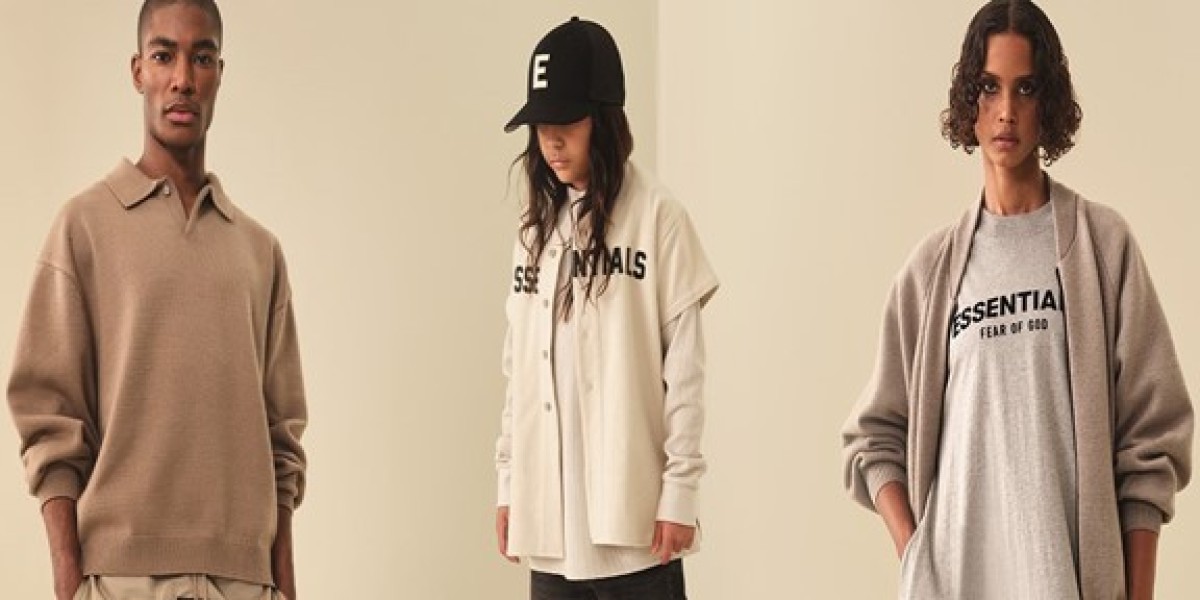Essential Hoodie: Quality in Fashion Materials of Canada
In Canada, where fashion is influenced by the country's diverse climate and growing cultural emphasis on sustainability, the quality of materials used in clothing—particularly in garments like the hoodie—has become a central concern for both consumers and designers. The hoodie, now a staple in everyday Canadian wardrobes, is crafted from a variety of materials that contribute to its warmth, durability, and overall appeal. This article explores the quality of materials used in Essentials Hoodie within the Canadian fashion market, focusing on how these fabrics cater to both the country's climate and the rising demand for eco-conscious and performance-driven fashion.
1. Cotton: Soft, Breathable, and Versatile
Cotton remains one of the most common and enduring materials for hoodies in Canada. Known for its softness, breathability, and comfort, cotton is the fabric of choice for Canadians looking for casual wear that is both cozy and versatile. It is especially popular in the transitional seasons of fall and spring when the weather is unpredictable, and layering is essential.
Organic Cotton: In recent years, the demand for organic cotton has risen due to growing awareness about environmental sustainability. Organic cotton, which is grown without the use of synthetic pesticides or fertilizers, has become a favorite choice among Canadian consumers who are seeking more eco-friendly options. Brands like Frank and Oak and Tentree offer organic cotton hoodies, reflecting Canada’s commitment to environmental consciousness.
Brushed Cotton: For the colder Canadian winters, brushed cotton—often used in fleece-lined hoodies—adds an extra layer of warmth while maintaining the breathable qualities of cotton. This material features a soft, fluffy texture on the inside, which traps air close to the body to provide insulation. This type of cotton is a popular choice for casual wear during colder months, making it a staple in Canadian winter wardrobes.
2. Polyester Blends: Durability and Performance
Polyester-cotton blends are widely used in Canadian hoodie designs, combining the comfort of cotton with the durability and performance characteristics of polyester. Polyester, a synthetic fabric, is durable, moisture-wicking, and resistant to wrinkles, which makes it ideal for activewear. Many Canadian brands, especially those focusing on athletic and outdoor wear, use polyester blends to ensure their hoodies hold up well in both casual and active settings.
In particular, recycled polyester is gaining popularity in Canada as part of the growing movement towards sustainable fashion. Made from recycled plastic bottles or pre-existing garments, recycled polyester reduces the environmental impact of producing new synthetic fibers. Brands like Lululemon and Roots are incorporating recycled polyester into their hoodie collections to meet the demand for environmentally conscious products without compromising on quality.
Blends of polyester and cotton provide a balance between comfort, breathability, and long-lasting durability, making them perfect for everyday wear in Canada’s active lifestyle.
3. Fleece: Insulation and Softness for Canadian Winters
Fleece is a key material in hoodies designed for Canada’s cold winter months. Known for its softness, warmth, and insulating properties, fleece is a popular choice for hoodies that need to provide both comfort and protection against the elements.
Polar Fleece: For the coldest months, polar fleece is often used in hoodie designs. This synthetic fabric is made from polyester fibers and is designed to trap body heat while being lightweight and breathable. It is an excellent material for layering, providing warmth without adding bulk. Brands that specialize in outdoor wear, such as The North Face and MEC (Mountain Equipment Co-op), offer fleece-lined hoodies that help Canadians stay warm during winter activities like skiing, hiking, and snowboarding.
Microfleece: Microfleece is a lighter, thinner version of fleece, offering comfort and warmth for milder temperatures. Many Canadian brands incorporate microfleece into their hoodie designs to create versatile pieces that can be worn in both autumn and spring. The fabric is soft, breathable, and moisture-wicking, which makes it ideal for layering or for wearing during physical activity.
Fleece-lined hoodies are a mainstay in Canada, where staying warm without compromising on comfort is a top priority for many consumers. The fabric is easy to care for, durable, and provides excellent thermal insulation, making it a popular choice for everyday wear and outdoor activities.
4. French Terry: Lightweight and Breathable
French terry is a fabric commonly used for hoodies in Canada due to its light, breathable nature and comfort. Made from cotton, French terry features a smooth outer surface and looped inner texture, which offers both absorbency and ventilation. This fabric is perfect for spring and fall hoodies, as it provides just the right amount of warmth without overheating the wearer.
French terry is often used in casual, athleisure-inspired hoodie designs, which have been gaining popularity in Canadian fashion. Brands like Lululemon and Aritzia offer French terry hoodies that cater to consumers seeking stylish and functional pieces for both lounging and light outdoor activities. The fabric’s moisture-wicking properties also make it a popular choice for activewear, as it can help keep the wearer dry during physical activities.
In the milder Canadian climates of cities like Vancouver or Toronto, French terry provides the ideal material for layering or wearing on its own in slightly cooler temperatures.
5. Sustainable Materials: Eco-Conscious Hoodie Fabrics
As sustainability becomes a driving force in Canadian fashion, many local brands are embracing environmentally friendly materials for their hoodie collections. This includes organic cotton, recycled polyester, and innovative fabrics like hemp and bamboo.
Recycled Polyester: Recycled polyester is a sustainable alternative to virgin polyester, reducing the environmental impact associated with plastic waste. It is made from post-consumer plastic bottles or other recycled polyester garments, transforming waste into wearable fashion. Canadian companies like Tentree and Frank and Oak are making strides in creating hoodies with recycled materials that maintain high quality, comfort, and performance.
Hemp: Known for its durability and eco-friendly properties, hemp is becoming a popular material for Canadian hoodies. Hemp is naturally resistant to bacteria, making it an ideal fabric for activewear. It is also biodegradable and requires fewer pesticides and water compared to other crops, contributing to its sustainability. Brands such as Turtledove London and Prana are incorporating hemp into their collections, offering environmentally conscious hoodies that also emphasize quality and style.
Bamboo: Bamboo fabric is another eco-friendly material that has been adopted in Canadian fashion. Bamboo is naturally soft, antibacterial, and moisture-wicking, making it an excellent choice for comfortable, breathable hoodies. Additionally,Essentials Shirts bamboo is a highly renewable resource, and its use in fabrics is gaining traction for consumers who want to reduce their environmental footprint. Bamboo-based hoodies are lightweight, breathable, and provide natural UV protection, making them perfect for layering during the transitional seasons in Canada.
6. Merino Wool: Natural Insulation for Cold Weather
Merino wool is gaining popularity in Canada for hoodies designed for cold-weather wear. Known for its natural insulation properties, merino wool helps regulate body temperature by trapping warmth in cold weather while allowing moisture to evaporate during physical activity. Unlike traditional wool, merino wool is softer, less itchy, and more comfortable against the skin.
Brands specializing in outdoor and active wear, like Icebreaker and Arc’teryx, use merino wool in their hoodies to provide warmth without adding excessive bulk. These hoodies are ideal for Canadians who engage in outdoor activities year-round, as merino wool offers a blend of comfort, warmth, and performance.
Conclusion
The quality of materials used in Canadian hoodies plays a crucial role in both their functionality and appeal. Whether it's for the freezing winters of the north or the milder weather of the west coast, the materials chosen reflect Canadians' diverse climate needs and their growing preference for sustainability and comfort. From soft cotton and fleece to eco-friendly fabrics like recycled polyester, hemp, and bamboo, the hoodie continues to evolve as a versatile, high-quality garment that balances style, performance, and environmental consciousness. As Canadian fashion continues to embrace innovation and sustainability, the hoodie will remain a staple in wardrobes across the country.






